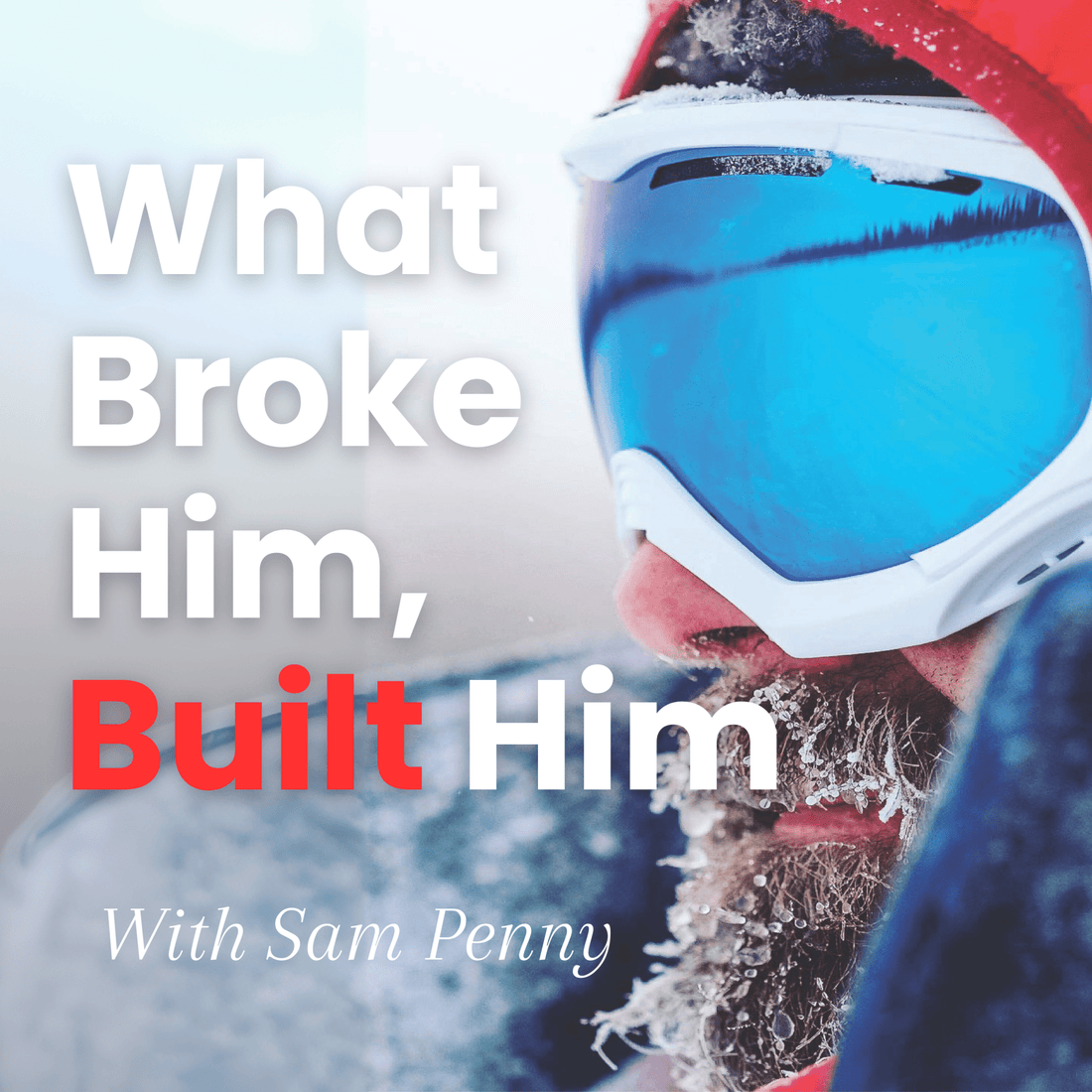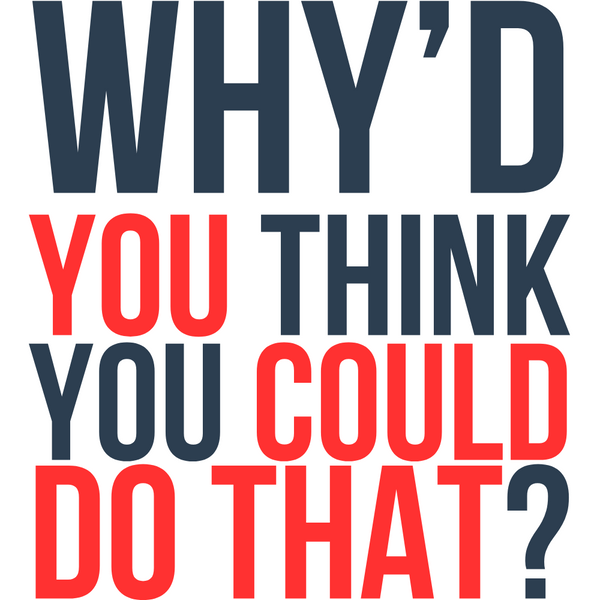
Ordinary Man. Impossible Race. Unshakable Grit: How Paul Watkins Turned Setback into Victory
Share
What makes someone risk it all—not once, but twice—to complete a 614-kilometre race through the Arctic in -40°C temperatures, pulling their own survival gear behind them?
The answer isn't what you think. It’s not about heroism. It’s not about ego.
It’s about choosing courage over comfort. One brutal, beautiful step at a time.
In this episode of Why’d You Think You Could Do That?, I sat down with Paul Watkins—a pharmacist, father, business leader, and adventurer—who redefines what it means to be brave. From the outside, Paul’s resume reads like an adventure film: he's climbed the world’s tallest peaks, survived ultra-marathons across frozen landscapes, and even won one of the most brutal footraces ever created.
🎙️ Listen to the Episode
Tune in now on your favourite platform and take the next brave step with us.
But that’s not the story that matters.
What matters is that Paul failed his first attempt at the 6633 Arctic Ultra. He collapsed. He pulled out.
Then he went back and won.
This blog isn’t just about the extremes. It’s about what you can learn from Paul’s story to apply to your own.
Whether you’re building a business, facing burnout, or standing on the edge of something that feels terrifying and uncertain—this is for you.
Burnout Was the Catalyst
Paul wasn’t always an adventurer. He was a pharmacist who had built multiple high-performing businesses in regional Victoria. By all external measures, he was successful.
Until he wasn’t.
"I woke up in hospital one day,” Paul said. “The doctor told me, ‘You need to slow down.’ And I realised—if you die with the most money, you don’t win.”
Burnout cracked Paul open. Not just physically, but mentally. What followed wasn’t a midlife crisis—it was a wake-up call. A call to get off the map, to do something wild, uncomfortable, and unstructured. So he booked a basic trek in Nepal.
“That trip reminded me what it felt like to be a human again,” he said.
And with that, the seed was planted.
Enter: The 6633 Arctic Ultra
After several years of mountaineering and chasing increasingly bold goals, Paul stumbled across an obscure race known only to the toughest adventurers: the 6633 Arctic Ultra.
Here’s what makes it legendary:
- 614 kilometres across the Canadian Arctic
- Temperatures regularly dipping below -40°C
- Competitors drag their own food, water, and shelter in a sled
- No crew. No checkpoints. Just you, the ice, and the clock
It’s not just a race. It’s an ordeal. And 80 percent of competitors drop out before the finish line.
Paul saw it and thought: “I reckon I could do that.”
The first time he tried, he made it 250km in.
And then he broke.
The First Failure: When the Body Says No
Paul’s first attempt was filled with hard lessons. He ignored his own pacing plan. He let ego creep in. He underestimated the toll of dragging 25 kilograms through snow and wind.
His body locked up. He hallucinated. He collapsed.
“I rang my wife in tears on the sat phone,” he said. “I told her I’d failed. And she just said, ‘Are you done? Come home. It’s okay.’”
Perspective matters.
Yes, he quit. But he’d gone further than most ever do. And more importantly—he now had the data.
That failure gave him the knowledge, clarity, and resolve he would need to return.
The Comeback: Why He Went Back
It wasn’t bravado that brought Paul back to the Arctic. It was unfinished business—with himself.
But this time, he was smarter.
“I had a clear race plan. I wasn’t there to beat anyone—I just wanted to finish. And I trained like a man possessed.”
Paul wasn’t trying to win. But somewhere deep into the race, when his plan was working and others were dropping off, he realised something:
He could win.
So he pushed.
And then he crossed the finish line—first.
Lessons From the Ice
Paul’s story isn’t just for runners or mountaineers. It’s for business owners, parents, creatives, and anyone who’s standing at the edge of something that feels too big.
1. Discipline Is Self-Love, Not Punishment
We tend to think of discipline as harsh, joyless, or even cruel. But Paul reframes it beautifully:
“Discipline is being your own biggest cheerleader. If there’s something you want—whether it’s a marathon or doing Parkrun with your kids—then discipline is just the way you support yourself to get there.”
2. Ordinary People Do Extraordinary Things
Paul doesn’t believe in “gifted” or “elite.” He sees himself as a completely ordinary bloke with one special trait: the willingness to ask, “What if I tried?”
“I’ve spent my life doing things I was completely unqualified for. And it’s been great.”
3. Failure Is Feedback, Not Final
When Paul failed his first attempt, it would’ve been easy to walk away.
Instead, he chose to extract the lessons. He studied what went wrong. He built a plan. And he returned stronger.
4. Find the Regret You Can Live With
“You’re going to regret something—whether you try and it fails, or you never try at all. So find the regret you can live with. And go.”
5. Build Evidence That You’re Brave
Paul doesn’t believe bravery is something you’re born with. He believes it’s something you build like a muscle. Each time you step outside your comfort zone, you stack more evidence that you're someone who tries.
Want to feel more confident? Start stacking.
Practising Bravery in Everyday Life
You don’t have to run through the Arctic to practise courage.
Paul says the best way to grow bravery is to consistently step off the edge of your map—even if only by a step.
It could be:
- Starting the business you've been dreaming about
- Signing up for that 5K
- Booking the call you’ve been avoiding
- Having the difficult conversation
Bravery doesn’t need to be public. In fact, most of the time, it’s quiet. It’s stubborn. And it starts when no one’s watching.
The Question That Changes Everything
Paul's keynote and book, Lost and Found, aren’t built on 10-step plans or overnight transformations.
“Why not me?”
It’s a question that helped him turn burnout into boldness. That helped him turn failure into fuel.
And it’s one we all need to ask more often.
If an “ordinary” pharmacist from country Victoria can win the coldest race on Earth—what are you capable of?
Listen to the Full Interview
Paul’s full story is packed with lessons, grit, and surprisingly human moments—like collapsing in the snow, swearing at a sled, and eating cheeseburgers as a post-race ritual.
🎙️ Listen now on Why’d You Think You Could Do That?
Final Thoughts
You don’t need to be ready. You just need to be willing.
If you’re standing on the edge of your own “impossible,” remember this:
- You don’t have to go alone
- You don’t need all the answers
- You don’t need to win on your first try
You just need to step off the map.
Resources and Links
- Book: Lost and Found
- Website: paulwatkins.com.au
- Socials: Instagram, LinkedIn
Written by Sam Penny
Coach for the Brave | Host of Why’d You Think You Could Do That?
Subscribe for more stories and strategies that turn fear into fuel.


